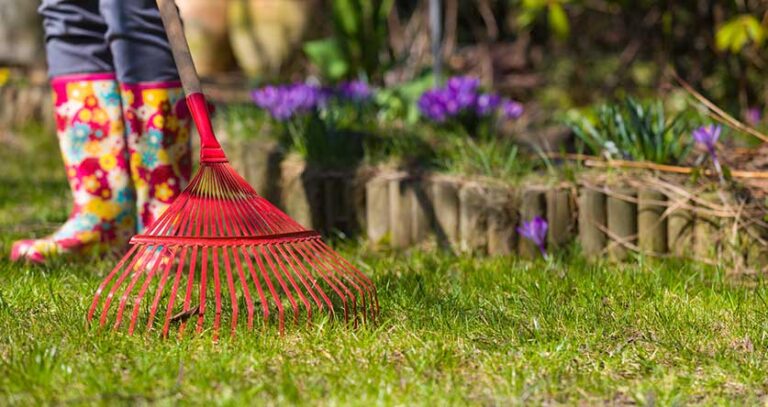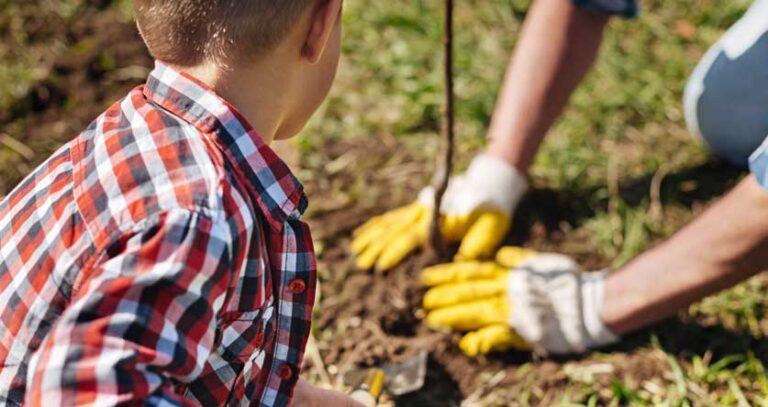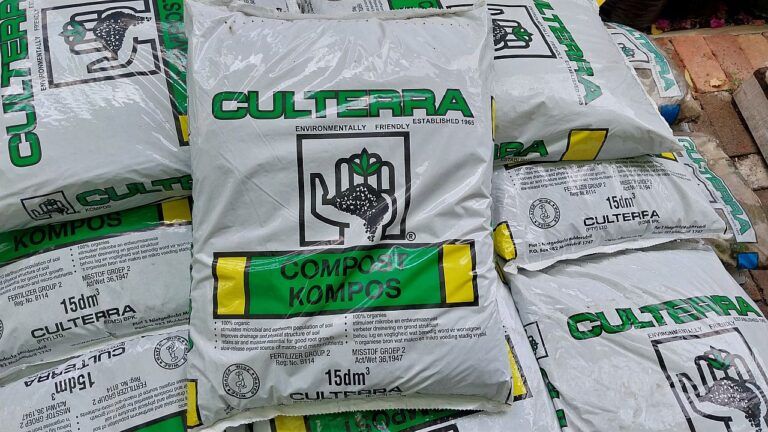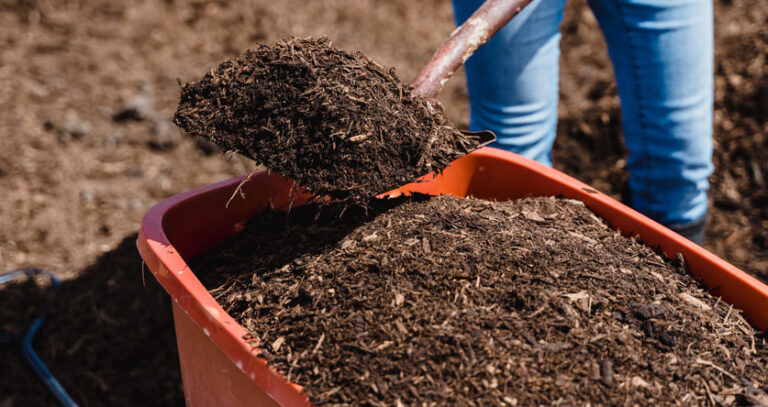Can You Plant Seeds In Compost? (The Surprising Truth)
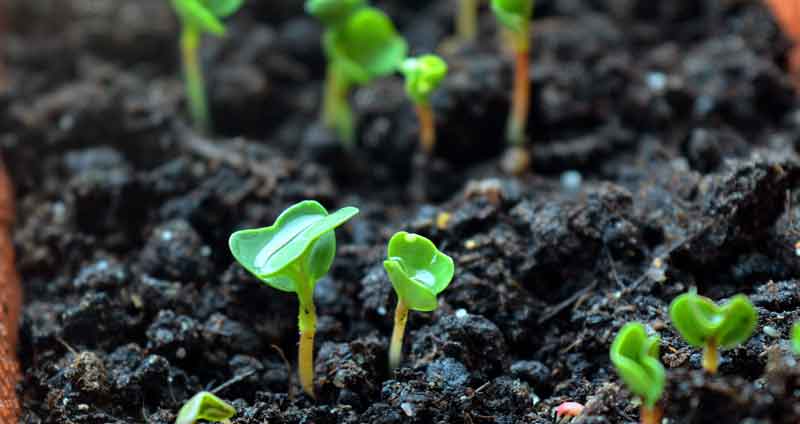
It can be tricky to decide what is the best medium for starting seeds and growing seedlings.
You know that compost is a wonderful substance with a multitude of benefits for soil and plant health. But can compost be used for planting seeds?
For most of us, the answer isn’t clear. For example, some experts recommend avoiding compost when sowing seeds. But many gardeners report outstanding results when they use compost or compost mixes.
So who’s right?
This article will explain everything you need to consider about using compost for seeds and seedlings.
Planting seeds in compost
Seedlings are delicate things. This means the ideal growing environment is a delicate balance of several factors.
There are good reasons why experts tell you not to use compost, but there are also some compelling reasons why you should.
Understanding some of the pros and cons of using compost for growing seeds and the potential effect on seedlings will help you judge whether or not to give it a try.
The principal considerations when using compost to grow seeds are the following:
- Potential pathogens
- Nitrogen uptake (compost maturity)
- Risks associated with anaerobic compost
- Drainage vs. oxygen problems
- Herbicides
Let’s take a look at each of these issues…
Compost is a biologically active substance. It’s teeming with beneficial organisms. But sometimes compost might also introduce disease organisms that are harmful to new plants.
These pathogens are one of the reasons it’s not recommended to sow directly in compost. However, suppose compost isn’t managed correctly and hasn’t heated up sufficiently during decomposition. In that case, some fungal diseases like blight or “damping off” remain in the compost and can infect seedlings.
To kill off these potential pathogens, compost needs to reach “hot composting” temperatures of around 140°F (60°C).
That’s pretty hot!
Homemade compost rarely reaches these temperatures (unless you carefully monitor the pile and use hot composting methods). The resulting product can potentially harm the fragile seedlings because of the presence of harmful pathogens.
Nitrogen deficiency is another possible difficulty.
This occurs if you use immature compost. At this stage, the microorganisms are still feeding on the partially decomposed material. They are hungry for nitrogen! Microbes use nitrogen to break down the remaining woody carbon components in the compost.
That’s why we sometimes use nitrogen-rich ingredients to “activate” a compost pile because they help get things cooking!
As a result, the emerging seedlings could be deprived of nutrients. In fact, the seedlings can become the source of food for microbes.
Compost that hasn’t been adequately maintained also has another couple of drawbacks. This is true if all or part of the compost has become anaerobic (lacking oxygen).
Anaerobic compost tends to be soggy. The excess moisture prevents oxygen from circulating and causes anaerobic conditions. This has two consequences that can affect seeds.
First, the lack of oxygen in a planting medium for seedlings is not ideal. It can starve new roots of oxygen (risk of hypoxia). Secondly, anaerobic decomposition releases organic acids and ammonia-type substances harmful to seedlings.
As well as the proper temperature, moisture, and light conditions, seedlings need oxygen to germinate. Compost can become problematic because it holds onto water like a sponge, filling up the pore spaces that hold air. A careful watering schedule needs to be maintained to prevent this problem when planting in compost.
When using compost for seedlings, the final consideration is the eventual presence of herbicides or pesticides in the compost. These chemicals could be toxic to seedlings. If you control the ingredients you put in your homemade compost, you’ll know whether this is possible. But I’ve even heard of commercial composts having this problem!
Green waste compost is a well-known culprit for containing traces of herbicides. This type of compost is made from waste materials collected from local communities, so who knows what’s in it!
These are the main concerns about using compost for planting seeds.
However, that doesn’t mean you can’t successfully germinate seedlings in compost!
I’ve seen plenty of examples where this works. It just means you need to choose or prepare the type of compost you use. You might also benefit from mixing the compost with other ingredients to make your own version of potting soil.
Can you plant seeds in compost?

If you use the right kind of compost, you can successfully plant seeds in compost. The compost you use should create the proper environment for germination, with adequate moisture and oxygen. Mature compost is better suited to planting seeds.
Mature compost will eliminate the problem of nitrogen deficiency. And because it has had time to break down, it should have a finer texture with higher humus content. This is better for seed roots and should help drainage.
If you use your own compost, you should screen the compost to remove any marge particles. Seedlings are unlikely to succeed in big lumps of compost. Use a compost sifter like this to get the job done quickly. (Amazon)
If you’re planting seeds outdoors, spread compost ahead of time (for example, in the fall before the spring growing season). This will give the compost time to break down further, getting fine organic matter.
You can also use store-bought compost. Check the ingredients to see what’s in it. Some of them contain added fertilizer. Too much fertilizer is just as harmful as not enough.
One of the properties of commercial compost is that it is sterile. The compost is carefully monitored so that it heats up to very high temperatures. This means no pathogens. However, it doesn’t eliminate all chemicals like herbicides.
Homemade compost has a low level of nutrients, so it has a low impact as a fertilizer. But it works like a slow-release fertilizer. The nutrients in compost are locked up and become available slowly over time as it breaks down. The microbial activity also encourages the release of nutrients from the soil over time.
Finally, make sure your compost comes from a source with no chemical residues.
Can seeds start in compost?
Using compost to start off seeds is perfectly fine. Starting seeds is pretty straightforward so long as the moisture conditions are correct. In the initial stages, seeds use the nutrients from within the seed to sprout. Then the roots slowly develop and seek nutrients in the growing medium.
Can you grow seeds in compost alone?
After the first germination stage, seeds develop roots in search of moisture and nutrients. A fine humus-type compost provides a suitable environment for this. It makes root growth pretty easy. And if watering is controlled correctly, the seedlings won’t become waterlogged.
How to grow seedlings in compost
I would definitely encourage you to try growing seedlings in your own homemade compost. I know gardeners who do this all the time, and they have plenty of success.
But you need to do things properly.
Here’s how you can do it:
- Use mature compost
- Make sure you sift your compost to get rid of any large particles.
- Plant the seeds in the compost (not too deep) and water thoroughly
- Leave the seeds in the shade and don’t water them until they have germinated and the seedlings are well developed.
So if possible, avoid putting them in direct sunlight. If they are in a shaded spot, you only need to water them initially. This helps the initial germination stage when the seed shell absorbs water (the moisture activates enzymes that begin growth). Afterward, the roots need oxygen, so overwatering could smother them. The compost will retain enough moisture for the next stage of the seedling’s growth.
By not overwatering, you also limit the chances of fungal diseases like damping off.
Begin watering again when the seedlings have developed. Don’t fertilize your seeds before they’ve sprouted.
If you’re concerned about the effectiveness of your compost, you can do a simple test. Put some of your compost in a pot and plant fast-growing plant seeds like lettuce or beetroot. Count the number of seeds you plant and wait to see how many germinate.
Can you plant seedlings in compost?
It is possible to transplant seedlings into compost. But be sure to address issues like maturity, quality, and structure as mentioned above.
Best compost for seedlings and planting seeds
The best compost for seedlings is a fine-textured mature compost with high humus content.
The compost should be well broken down. Any clumps of compost might have become anaerobic. Sift them out and only use matured aerobic compost.
If you’re planting food crops, remember most vegetables are heavy feeders. So they need plenty of nitrogen and phosphorus. You can try to make your compost higher in nitrogen content by adding plenty of green ingredients, such as manure. But make sure the compost has been turned regularly and doesn’t become anaerobic.


